
Healthcare diagnostics company Labcorp Holdings (NYSE: LH) beat Wall Street’s revenue expectations in Q4 CY2024, with sales up 9.8% year on year to $3.33 billion. The company’s full-year revenue guidance of $13.97 billion at the midpoint came in 1.4% above analysts’ estimates. Its non-GAAP profit of $3.45 per share was 1.7% above analysts’ consensus estimates.
Is now the time to buy Labcorp? Find out by accessing our full research report, it’s free.
Labcorp (LH) Q4 CY2024 Highlights:
- Revenue: $3.33 billion vs analyst estimates of $3.31 billion (9.8% year-on-year growth, 0.6% beat)
- Adjusted EPS: $3.45 vs analyst estimates of $3.39 (1.7% beat)
- Adjusted EBITDA: $414.4 million vs analyst estimates of $535.4 million (12.4% margin, 22.6% miss)
- Management’s revenue guidance for the upcoming financial year 2025 is $13.97 billion at the midpoint, beating analyst estimates by 1.4% and implying 7.3% growth (vs 7% in FY2024)
- Adjusted EPS guidance for the upcoming financial year 2025 is $16 at the midpoint, in line with analyst estimates
- Operating Margin: 6.5%, up from -4% in the same quarter last year
- Free Cash Flow Margin: 20%, up from 13.7% in the same quarter last year
- Organic Revenue rose 5.4% year on year (1.5% in the same quarter last year)
- Market Capitalization: $20.91 billion
"In 2024, Labcorp delivered exceptional results driven by both organic and inorganic growth," said Adam Schechter, chairman and CEO of Labcorp.
Company Overview
Founded in 1978, Labcorp Holdings (NYSE: LH) is a life sciences and diagnostics company that provides clinical testing, drug development, and medical testing solutions.
Testing & Diagnostics Services
The testing and diagnostics services industry plays a crucial role in disease detection, monitoring, and prevention, serving hospitals, clinics, and individual consumers. This sector benefits from stable demand, driven by an aging population, increased prevalence of chronic diseases, and growing awareness of preventive healthcare. Recurring revenue streams come from routine screenings, lab tests, and diagnostic imaging, with reimbursement from Medicare, Medicaid, private insurance, and out-of-pocket payments. However, the industry faces challenges such as pricing pressures, regulatory compliance, and the need for continuous investment in new testing technologies. Looking ahead, industry tailwinds include the expansion of personalized medicine, increased adoption of at-home and rapid diagnostic tests, and advancements in AI-driven diagnostics that enhance accuracy and efficiency. However, headwinds such as reimbursement uncertainties, competition from decentralized testing solutions, and regulatory scrutiny over test validity and cost-effectiveness may impact profitability. Adapting to evolving healthcare models and integrating automation will be key for sustaining growth and maintaining operational efficiency.
Sales Growth
A company’s long-term sales performance can indicate its overall quality. Any business can put up a good quarter or two, but many enduring ones grow for years. Unfortunately, Labcorp’s 2.4% annualized revenue growth over the last five years was tepid. This fell short of our benchmarks and is a poor baseline for our analysis.
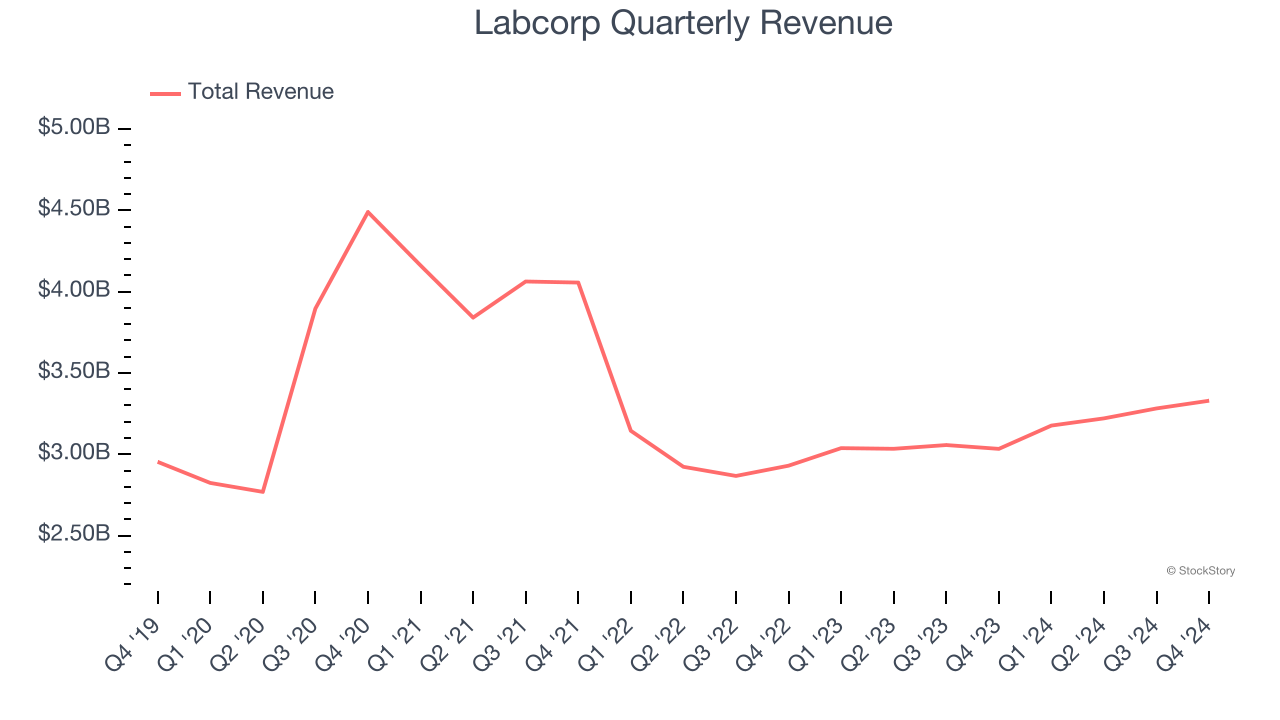
Long-term growth is the most important, but within healthcare, a half-decade historical view may miss new innovations or demand cycles. Labcorp’s annualized revenue growth of 4.7% over the last two years is above its five-year trend, but we were still disappointed by the results. 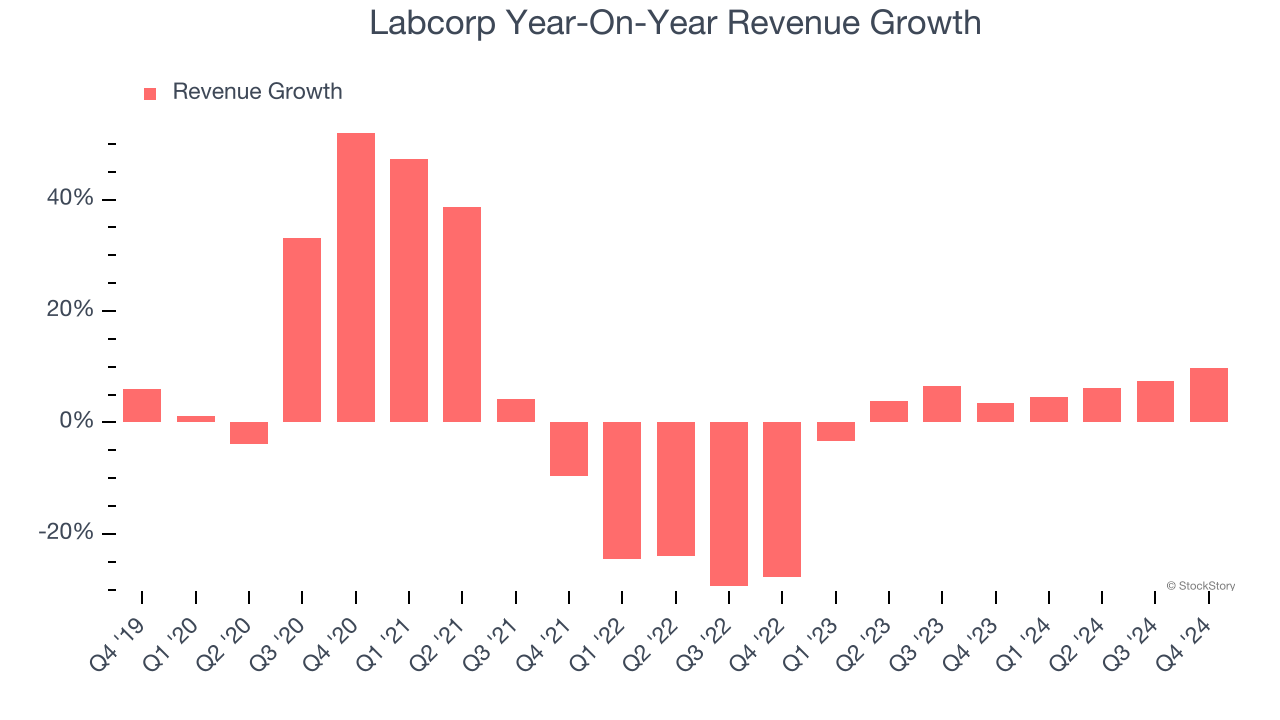
We can dig further into the company’s sales dynamics by analyzing its organic revenue, which strips out one-time events like acquisitions and currency fluctuations that don’t accurately reflect its fundamentals. Over the last two years, Labcorp’s organic revenue averaged 2.4% year-on-year growth. Because this number is lower than its normal revenue growth, we can see that some mixture of acquisitions and foreign exchange rates boosted its headline results. 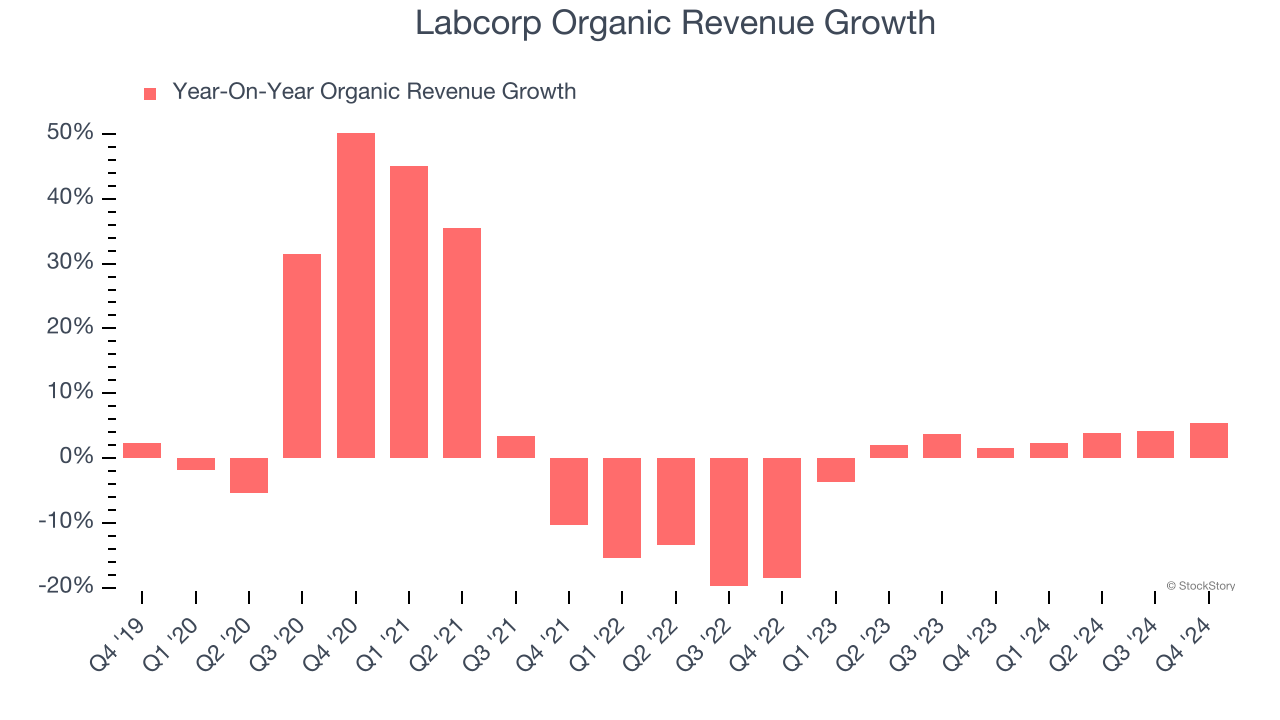
This quarter, Labcorp reported year-on-year revenue growth of 9.8%, and its $3.33 billion of revenue exceeded Wall Street’s estimates by 0.6%.
Looking ahead, sell-side analysts expect revenue to grow 6.3% over the next 12 months, an improvement versus the last two years. This projection is above the sector average and suggests its newer products and services will spur better top-line performance.
Today’s young investors won’t have read the timeless lessons in Gorilla Game: Picking Winners In High Technology because it was written more than 20 years ago when Microsoft and Apple were first establishing their supremacy. But if we apply the same principles, then enterprise software stocks leveraging their own generative AI capabilities may well be the Gorillas of the future. So, in that spirit, we are excited to present our Special Free Report on a profitable, fast-growing enterprise software stock that is already riding the automation wave and looking to catch the generative AI next.
Adjusted Operating Margin
Labcorp has managed its cost base well over the last five years. It demonstrated solid profitability for a healthcare business, producing an average adjusted operating margin of 19.5%.
Analyzing the trend in its profitability, Labcorp’s adjusted operating margin decreased by 5.9 percentage points over the last five years. The company’s two-year trajectory also shows it failed to get its profitability back to the peak as its margin fell by 5.5 percentage points. This performance was poor no matter how you look at it - it shows operating expenses were rising and it couldn’t pass those costs onto its customers.
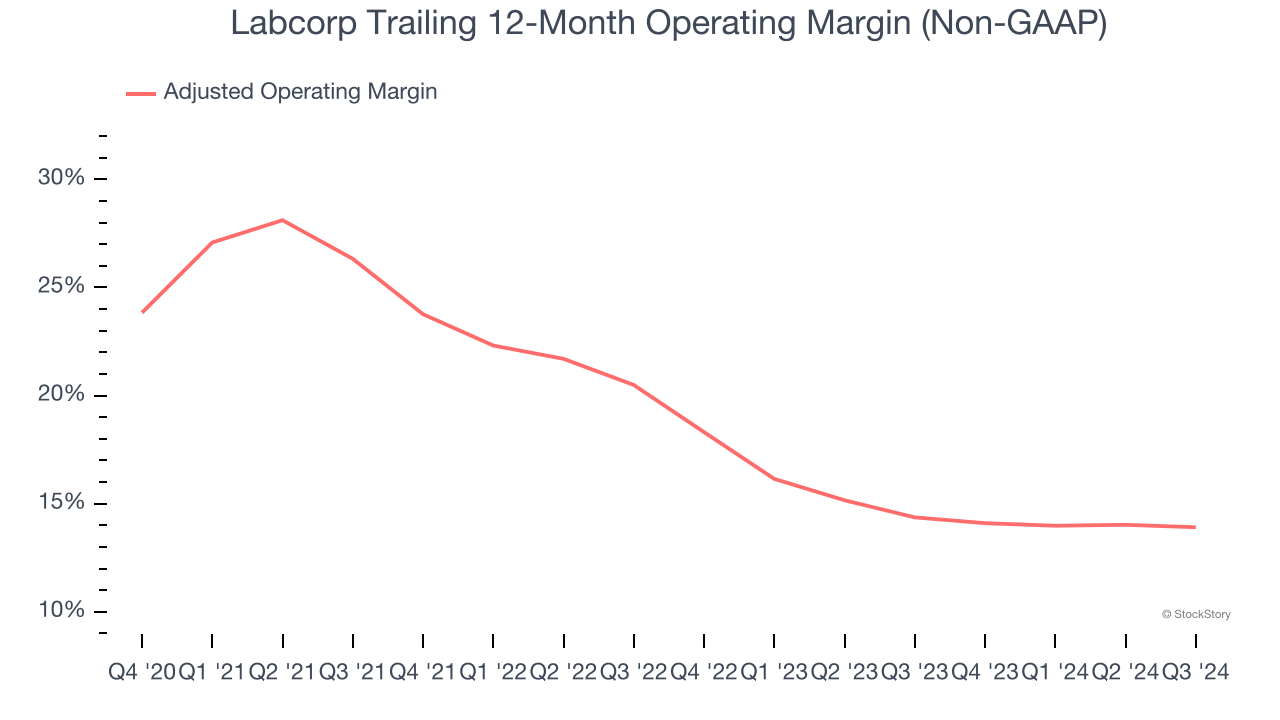
In Q4, Labcorp generated an adjusted operating profit margin of 12.4%, in line with the same quarter last year. This indicates the company’s overall cost structure has been relatively stable.
Earnings Per Share
Revenue trends explain a company’s historical growth, but the long-term change in earnings per share (EPS) points to the profitability of that growth – for example, a company could inflate its sales through excessive spending on advertising and promotions.
Labcorp’s EPS grew at a decent 5.2% compounded annual growth rate over the last five years, higher than its 2.4% annualized revenue growth. However, this alone doesn’t tell us much about its business quality because its adjusted operating margin didn’t expand.
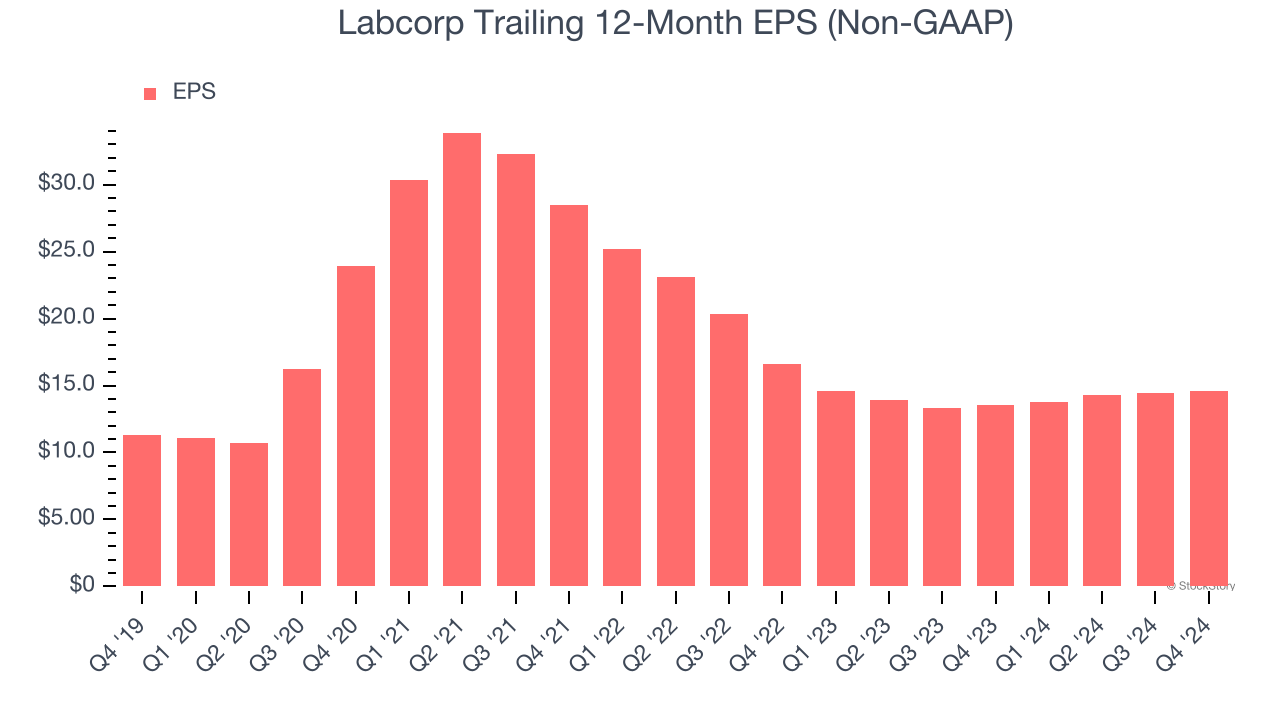
We can take a deeper look into Labcorp’s earnings quality to better understand the drivers of its performance. A five-year view shows that Labcorp has repurchased its stock, shrinking its share count by 14.1%. This tells us its EPS outperformed its revenue not because of increased operational efficiency but financial engineering, as buybacks boost per share earnings. 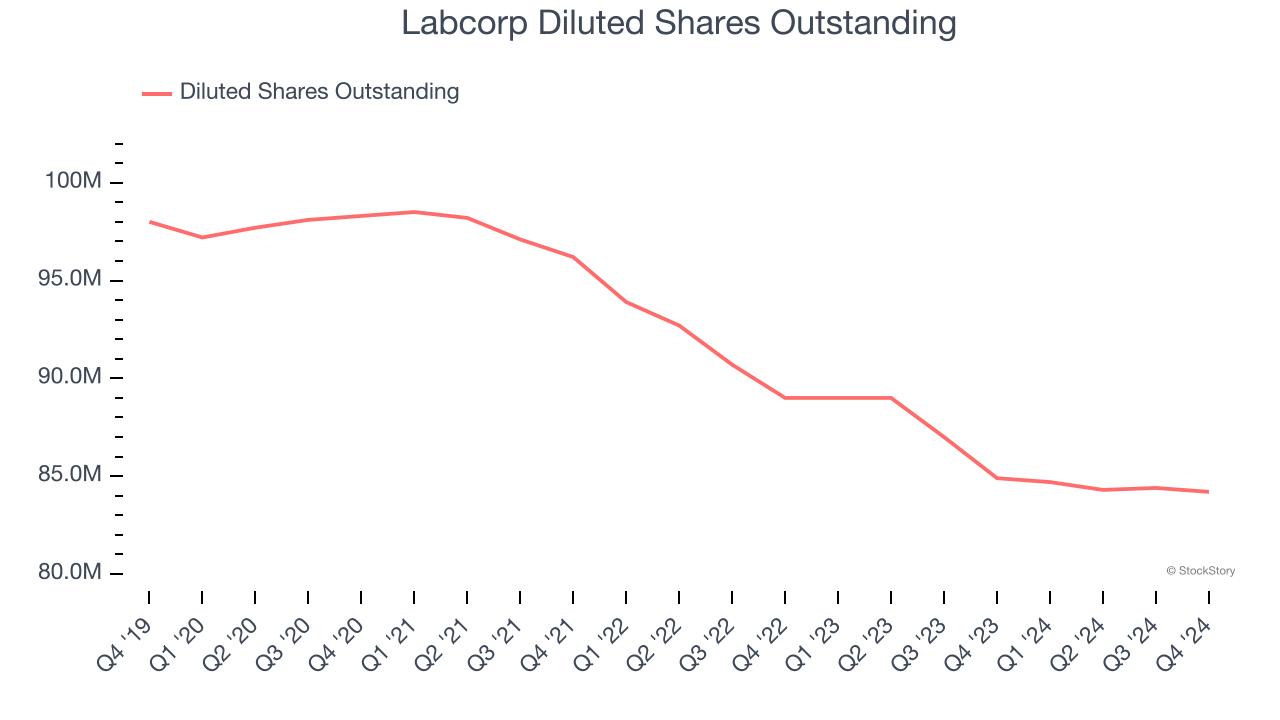
In Q4, Labcorp reported EPS at $3.45, up from $3.30 in the same quarter last year. This print beat analysts’ estimates by 1.7%. Over the next 12 months, Wall Street expects Labcorp’s full-year EPS of $14.57 to grow 9.1%.
Key Takeaways from Labcorp’s Q4 Results
It was good to see Labcorp provide full-year revenue guidance that slightly topped analysts’ expectations. We were also happy its organic revenue was in line with Wall Street’s estimates. On the other hand, its EPS was just in line. Zooming out, we think that while it wasn't a percent quarter, the results were fairly decent. The stock remained flat at $250 immediately after reporting.
So do we think Labcorp is an attractive buy at the current price? The latest quarter does matter, but not nearly as much as longer-term fundamentals and valuation, when deciding if the stock is a buy. We cover that in our actionable full research report which you can read here, it’s free.






